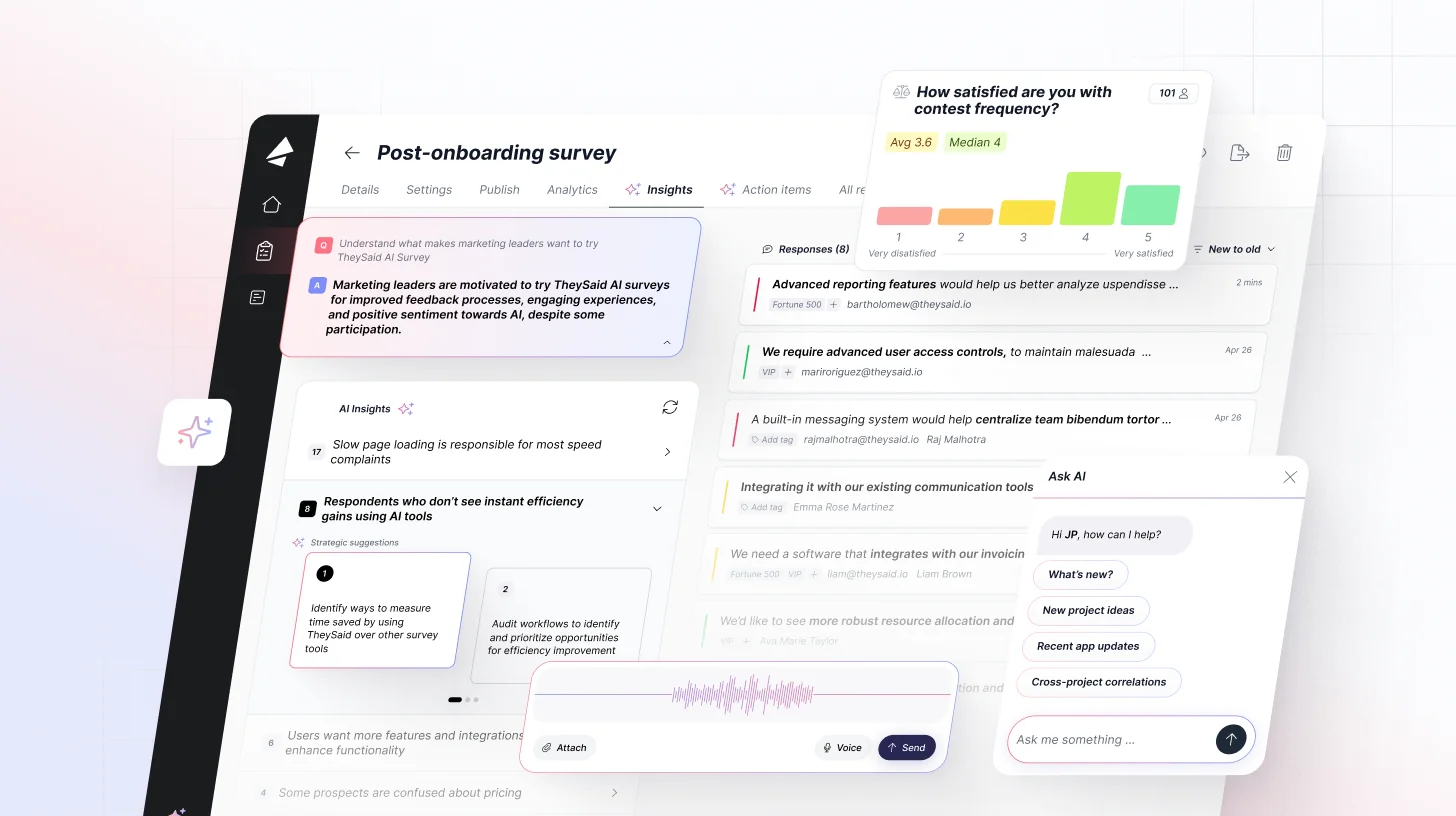 Blog
Blog Making 1:1 Meetings Count in the Era of Remote Work
Making 1:1 Meetings Count in the Era of Remote WorkMaking 1:1 Meetings Count in the Era of Remote Work

Oftentimes, one-on-one meetings are hurried, disorganized check-ins or quick performance reviews that get overlooked or canceled because of more pressing concerns.
It’s no wonder; managers already have the responsibility of supporting large teams to achieve their objectives, while simultaneously trying to meet their own deadlines on personal projects.
Yet, when team members are consistently disregarded, their motivation and sense of belonging are compromised. In times like these, when career uncertainty abounds due to the COVID-19 pandemic, the importance of one-on-one meetings cannot be stressed enough. Perceived job insecurity can have a significant effect on a team member’s physical and mental health and, according to a New York Times piece (following the 2008 recession), it “reduces job satisfaction and decreases work performance.”
One-on-ones are the team member’s place to express these concerns, understand how the company is doing, and to feel a renewed sense of motivation and fulfillment in their work.
Most of us will be working from home for the foreseeable future. There is no better time to tune up and bring value back to your one-on-one meetings, especially as remote work becomes the norm. How do you do it? We will get to that, but first, let’s take a look back.
What I Learned About 1:1 Meetings From 15+ Years in B2B SaaS
I’ve been in B2B SaaS for over 15 years. For most of my career, one-on-ones were mainly tactical check-ins with a side of “personal connection.” What happened last week, what's going on this week, what are your blockers.
There are two profound underlying issues with this format:
Problem #1: As companies grow, managers will gain an ever-increasing amount of direct reports. Suddenly, a huge chunk of their week is spent in one-on-one meetings. Sound familiar?
Problem #2: The one-on-one meeting, when used as a tactical check-in, is much more valuable to the manager than the employee.
Along with my co-founders Nick and Hari, we sought to address these issues at Nuffsaid; how to make our one-on-one meetings more valuable for both parties and how our managers could receive pertinent information without sacrificing hours each week to essentially receive a status update. There had to be a better way.
Building inclusion and personal connection into the one-on-one
Much like creating our company values at Nuffsaid, we’ve learned the significance of being intentional about one-on-one meetings very early on. We aim to learn from our previous experiences and build something that works for our vision. For instance, as one of our core values is to build 30-year relationships, we wanted to design a one-on-one structure that would encourage those connections to take form.
We also wanted to structure our one-on-ones to be both scalable and to be the team member’s meeting (not the manager’s). So we kicked off the process by looking at the reasons why employees typically leave companies.
They tend to leave because:
- They have a poor relationship with their boss.
- If a team member feels like their boss doesn’t care about them personally, they’re more likely to consider a place where someone does.
- They don’t feel included in what’s going on with the company.
- If a team member doesn’t have a say in what’s going on with the company, why should they care about staying?
- They experience a lack of career growth.
- If a team member has become stagnant in their role, they may look at other options to further advance their career.
We then tailored our one-on-one meeting structure around those elements—helping to build a solid relationship and communication channel between the team member and manager, making sure everyone is included in the company conversation, and creating the space for career discussions. Nick, Hari, and I also knew addressing these issues early on would help mitigate the risk of having one of those be a reason why someone would leave Nuffsaid.
From 1:1 to “Syzygy”: Redefining the Remote Work Connection
Internally, we call the one-on-one a “syzygy,” a term meaning alignment of three celestial bodies. Here, that alignment is between the team member, manager, and company.
What Syzygy Looks Like:
- Recurring monthly 60-minute meetings
- Never rescheduled unless urgent
- Conversational and informal
- Highlights documented
These meetings are not:
- A tactical meeting to discuss project status, share updates, etc.
- A formal performance review
The agenda we follow
In each meeting, we follow this structure. We go through the questions in these three sections: look around, look back, and look forward.

Note: Managers at Nuffsaid make a copy of this excel sheet for each direct report to track responses. (Feel free to make a copy of this template.)
1. Look around
The “look around” section is both 1.) a private forum to discuss personal issues or frustrations, and 2.) a place to share feedback about the leadership team and company.
A private forum
The initial part of the one-on-one provides space for the manager and team member to speak openly about what’s going on both personally and professionally. Immediately, a manager will get a real sense of the pulse of their direct report. We formatted the syzygy this way because when there are frustrations, concerns, or personal issues, we want them to bubble up early.
Managers ask:
- How are you doing since the last time we met?
- What's on your mind about the company?
- Do you have any frustrations or concerns?
- Do you have any feedback for me personally?
A place to share feedback
Next, we gather leadership feedback as a way for anyone in the company to anonymously share feedback or ideas to Nuffsaid’s leadership team directly or about the company in general. This document is publicly available, so anyone can fill it out at any time. Or, if the team member prefers, their manager can fill it out during the manager’s syzygy so the team member’s anonymity is further protected.
Also included in that leadership feedback form are questions about how we’re living up to our company values. At Nuffsaid, we continuously reinforce the culture we want to see and the syzygy is a perfect delivery mechanism for that. It provides a channel for anyone in the company to uncover areas where the company isn’t living up to our core values. We try to be intentional about taking this advice seriously, adjusting where we can, and then showing gratitude for the feedback.
Finally, we ask questions to gain insightful feedback about underlying problems and how the company can solve them. The goal here is to not have a finger-pointing session, but a chance for a team member to say, “Hey, here's a problem that we need to fix.”
- What's the number one problem at the company and why?
- What's the biggest opportunity that we're missing out on?
- Who is really kicking ass and who do you admire?
- What’s not fun about working here?
2. Look back
When we look back on past performance, we start with questions around how engaged the team member is with their work at Nuffsaid. We ask:
- Do you have the opportunity to do your very best work here?
- Do you feel like you're getting appropriate recognition for the good work that you do?
- Are you proud to work at this company?
- Do you rarely think about looking for another job?
- Do the leaders of the company keep you informed about what's happening?
Next up, we head into performance. This is the most traditional section of the one-on-one—many companies only focus on this part, and others never include it in their one-on-ones. The idea here is to highlight what the team member has accomplished recently. The team member and manager should:
- Share and document performance highlights
- Share and document areas that need to improve
- Set clear expectations about what success looks like
Looking at performance regularly is a necessity because it helps team members have a clear understanding of how they’re doing. Instead of having to wait for 6-12 months for a performance review, under this format we don’t have “surprises” and team members benefit from shorter feedback loops.
3. Look forward
The final section of the syzygy should be about looking forward. Managers ask team members about blockers, or things that are preventing them from reaching their short term goals, their long term goals, and their career vision. All the while, managers should be thinking about what they can do to ensure their report is successful and supported moving forward.
Long-term goals
The final parts of the syzygy are dedicated to checking in on the long term goals that were established early on by the team member (managers ask team members about their long term goals within the first month of them joining). The focus is whether anything has changed to those goals—and if so, why? Asking about this on a regular cadence helps the manager quickly know if the team member's vision of their career has changed in any way. That way the manager can always be sure they're mentoring, coaching, and sponsoring the individual in the right ways.
Career vision
The last piece discussed is on a case by case basis if a direct report thinks it is time to advance their career. At Nuffsaid, our policy is if a team member is asking for a promotion and has consistently performed at an exceptional level, managers should ask them what they'd like to do next. If, however, their performance has been average or below average, they should share clear expectations around the performance the person needs to achieve before the company could consider them for a promotion.
Conclusion: Why Remote Work Needs Strong 1:1 Meetings
In today’s age of remote work, structured and thoughtful 1:1 meetings are more vital than ever. They support remote team management, help identify growth blockers early, and maintain a sense of belonging across distributed teams. By investing in a meaningful one-on-one format, companies can improve performance, increase employee retention, and ensure every team member is aligned with the organization's vision.


















.svg)